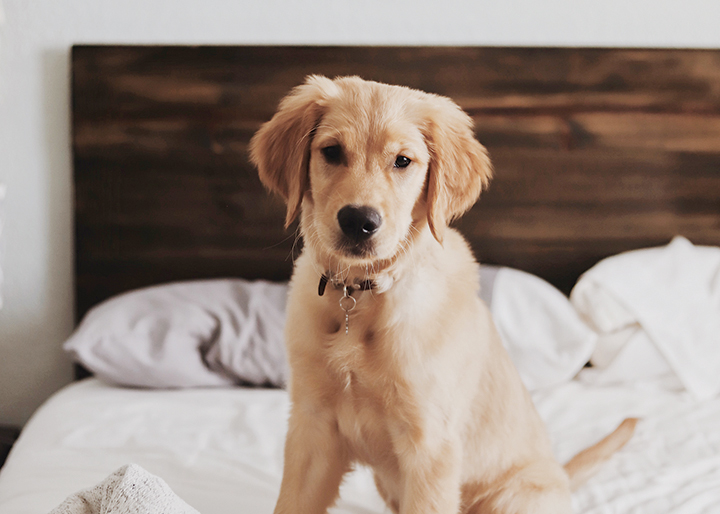Becoming Pet Passionate

Spread the Word – and Stay Pawsitive
By Victoria Cowart, CPM
Are you acquiring residential rental property and wanting to start on the best foot? Here’s a question that will impact approximately seventy percent of your renters. How will you respond to pets in your rental properties? Will you prohibit pets? Will you become pet-friendly? Or will you push yourself and your success by becoming pet passionate?
Available data today says 76% of the property management industry consider themselves and their rental properties pet-friendly. Contrast that with those seeking pet-friendly housing, with 72% saying it’s hard to find. Also, consider that somewhere north of 90% of residents and property management professionals agree that pets are important family members.
The Industry Response
The rental property management industry today has a wide variety of responses to pets. Some companies prohibit cats and dogs in their rentals, some permit pets, and even have no restricted breeds of dogs. In contrast, other companies have ten or more restricted breeds. Some companies have no weight restrictions, while others have varying weight restrictions from 25 to 100 pounds. These policies are all over the map. So again, what will your pet policies and pet restrictions be?
And if you’re willing to permit pets, where do you stand on pet-related fees or deposits? The industry has pet rents, nonrefundable pet fees at move-in, and occasionally additional deposits as well. Some areas of the country have regulations on these rents, fees, and deposits. How will you structure those?
As you continue or begin new property management endeavors, these are great questions to ask yourself. But you may ask yourself again, “Why is it so important?” From a human perspective, pets promote relaxation, reduce loneliness and depression, and reportedly caused their pet parents to report a higher life satisfaction than non-pet owners do.
One study showed that 80% of pet owners say their pet makes them feel less lonely, and 54% connect with others more readily. Pre-pandemic, one in ten adults would raise their hand and admit to being people living with a mental or emotional disability. Would it surprise you to learn that it is now four in ten? And where does, if it does, that factor into your policymaking in this arena?
Pawsitively Exciting
But let’s not shy away before we’ve given this a full once over. Let’s quantify this a bit further. Twenty-seven percent of households in the country have children, whereas 70% of households have pets. This means that today’s households are more likely to include pets than children under the age of 18. Our most extensive group of renters, millennials, are very pet enthusiastic. Seventy-five percent of people in their thirties own a dog, and 50% of people in their thirties own a cat. The resulting pet population is astonishing, at 230M+ cats and dogs in our country in 137M+ households. Those are statistics that are hard to stare at for long if you’re thinking of being less than pet friendly, but pawsitively exciting if you’re on the road to becoming pet passionate.
As you read this, you may be saying, “But they make such a mess in rental properties.” And while many share that sentiment, there are statistics on this as well that are worth considering before you decide on your pet policies.
One source said, “Pets are a safe bet in the rental housing industry.” “How so?” you might ask. The statistics show that only 9% of pets caused damage and that the national average value of that damage is only $191.
With that said, what do your customers, renters, really think about pets in rental housing? Seventy one percent of renters know that pets create community—bringing people together. And not surprisingly, there was a better than seven out of ten correlation between the presence of pet-related amenities and the likelihood of rentals and renewals.
Beneficial Results of Being Pet Passionate
Studies show several beneficial results when we become more pet passionate about our policies. Among them, an increased disclosure about pets, leading to fewer unauthorized pets, a decrease in the risk of unvaccinated bites, and the creation of a tie that binds — community. Additionally, you receive more applications, more potential renters per available rental, a competitive edge, and faster and easier leasing. Eighty-three percent of property managers say their rentals rent faster, and 79% say their rentals are easier to fill with more inclusive pet policies. Are your levels of pet passion on the rise yet?
Let’s get even more specific about the areas of enhanced performance. Turnover is lower in more pet-inclusive rentals. \Pets are a reason for turnover 24% of the time. With more inclusive pet policies, the occupancy duration is longer as well. Instead of 18-month tenancies in more pet-prohibitive rentals, pet-passionate rentals can have renters for 27 to 46 months. And with an average December 2022 rent in the country at $2007 per month, every month of additional tenancy counts. With even one extra month on average, that’s $2007 in additional rent and better than a $40,000 boost in property values at a 5% CAP rate. And in addition to additional months, renewals are enhanced as well — with one pet-passionate PetScreening partner reporting a whopping 80% of pet-owning residents renewing their lease. Eighty percent renewals, anyone?
With reductions in turnover, you will save money marketing your vacancies. The National Association of Realtors says landlords spend less than half as much money advertising their pet-friendly units. And let’s be sure to address the ever-present pressure — vacancy. One study revealed that pet-friendly rentals have a vacancy rate that is 4% lower and that their vacancies rent ten days more quickly.
With all these statistics, what are your reasons for remaining pet-prohibitive? Or are you already pet friendly? Pets make our renters happier, create community, increase their length of stay, increase revenue, decrease vacancy, and do wonders for your bottom line. Become pet passionate, spread the word — and stay pawsitive.














